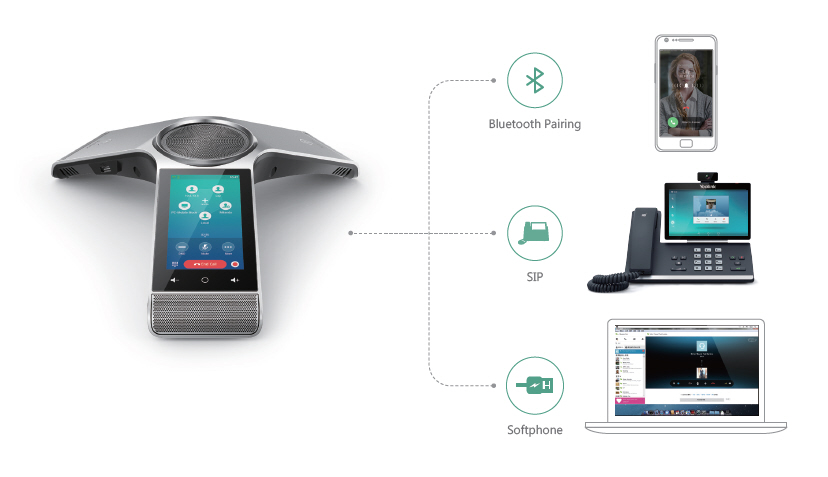Introduction
In the ever-evolving landscape of modern business, integrating technology into operations has become paramount for success. Among the myriad of tools available, VoIP Phone Systems stand out as a transformative solution that can streamline communication, enhance collaboration, and reduce costs. This article delves deep into how businesses can effectively integrate their operations with VoIP Phone Systems, optimizing every facet of communication for https://dantezaes.bloggersdelight.dk/2024/12/22/exploring-the-a-z-of-softphones-a-key-component-of-your-voip-strategy/ better productivity and efficiency.

What Are VoIP Phone Systems?
Understanding VoIP Technology
Voice over Internet Protocol (VoIP) is a technology that allows individuals to make voice calls using the internet instead of traditional telephone lines. This method converts voice signals into digital data packets, enabling seamless communication over the web.
Key Features of VoIP Phone Systems
Cost-Effective Communication: VoIP systems often come at a fraction of the cost compared to traditional telephony. Scalability: Businesses can easily add or remove lines and features as needed without extensive hardware changes. Advanced Features: Many VoIP systems offer call forwarding, voicemail-to-email, video conferencing, and more. Mobility: Employees can use VoIP services from anywhere with an internet connection.Integrating Your Business Operations with VoIP Phone Systems
Integrating your business operations with VoIP phone systems requires a strategic approach. It’s not merely about replacing existing phone lines; it's about rethinking how communication flows within your organization.
Assessing Current Communication Needs
Before implementing a VoIP system, evaluate your current communication methods. Identify pain points such as high costs, poor call quality, or limited features.
Choosing the Right VoIP Provider
Selecting the right provider is crucial. Consider factors like reliability, customer support, pricing models, and scalability when making your choice.
Planning for Integration
Develop a comprehensive plan detailing how you will integrate the VoIP system into your existing infrastructure. This should include timelines, responsibilities, and necessary training for staff.
Benefits of Integrating VoIP in Business Operations
Improved Communication Efficiency
With features such as call routing and automated attendants, businesses can enhance their response times significantly.
Enhanced Collaboration Tools
VoIP systems often come equipped with integrated messaging and video conferencing tools that promote collaboration among remote teams.
Reduced Operational Costs
The transition to a VoIP system usually results in lower monthly bills due to reduced call charges and fewer hardware requirements.
Flexibility and Mobility
Employees no longer need to be tethered to their desks; they can communicate from anywhere via mobile apps linked to the VoIP system.

Challenges in Integrating VoIP Systems
Internet Dependency Issues
A reliable internet connection is vital for maintaining call quality; disruptions can lead to significant communication lapses.
Security Concerns
VoIP systems are susceptible to hacking attempts if proper security measures aren't implemented.
Employee Training Requirements
Transitioning from traditional phone systems may necessitate training employees on new technologies and workflows.
Implementing Your VoIP System: A Step-by-Step Guide
Conduct an Audit: Analyze current communication practices. Select a Provider: Choose a provider based on your needs. Plan Deployment: Create an implementation timeline. Train Staff: Provide necessary training sessions for employees. Monitor Performance: Regularly assess the effectiveness of the new system.Comparative Analysis: Traditional vs. VoIP Phone Systems
| Feature | Traditional Phone Systems | VoIP Phone Systems | |-----------------------------|--------------------------|-------------------------| | Cost | Higher | Lower | | Scalability | Difficult | Easy | | Advanced Features | Limited | Extensive | | Call Quality | Variable | Consistent |
Common Misconceptions About VoIP Phone Systems
1. “VoIP Is Only Suitable for Large Businesses.”
This myth disregards the flexibility and affordability that makes it an excellent choice for small businesses as well.
2. “VoIP Quality Is Always Poor.”
While quality can depend on internet connectivity, many businesses report superior clarity compared to traditional landlines.
Legal Considerations When Using VoIP Solutions
Before implementing a new system, familiarize yourself with local regulations regarding telecommunications to ensure compliance across all operations.
FAQs About Integrating Your Business Operations with VoIP Phone Systems
1. What is a basic requirement for using a VoIP phone system?
To use a VoIP phone system effectively, you'll need reliable internet access along with compatible devices such as IP phones or computers equipped with headsets.
2. How does integrating a VoIP system affect call quality?
Call quality primarily depends on your internet connection's speed and stability; high-speed broadband is essential for optimal performance.
3. Can I keep my existing phone number when switching to a VoIP service?
Yes! Most providers offer number porting services so you can retain your existing number during the transition process.
4. Is it possible to integrate other software tools with my new VoIP system?
Many modern VoIP solutions allow integration with CRM systems and other business applications for streamlined operations and enhanced functionality.
5. Are there any hidden fees associated with using a VoIP phone service?
While most providers are transparent about their pricing structures, it's always wise to review contracts closely for any potential extra charges related to setup or equipment rental fees.
6. How secure are my communications over a VoIP network?
Security measures vary by provider but generally include encryption protocols that protect against unauthorized access; however, it’s essential always to follow best practices in cybersecurity regardless of platform used.
Conclusion: Embracing Change through Integration
In conclusion, integrating your business operations with VoIP phone systems represents an invaluable opportunity to enhance communication efficiency while reducing costs significantly—an integral step toward modernizing operational frameworks today! As we’ve explored throughout this article—from understanding what these powerful technologies entail down through practical integration strategies—you now possess ample knowledge needed when considering making this exciting leap forward alongside fellow innovators around us!
By embracing these advancements responsibly—keeping security concerns at bay while ensuring thorough employee training—we’ll unlock endless possibilities ahead where collaboration flourishes unhindered by antiquated limitations imposed upon us previously! So let’s take that plunge together confidently knowing our future awaits—enhanced connectivity awaits us!